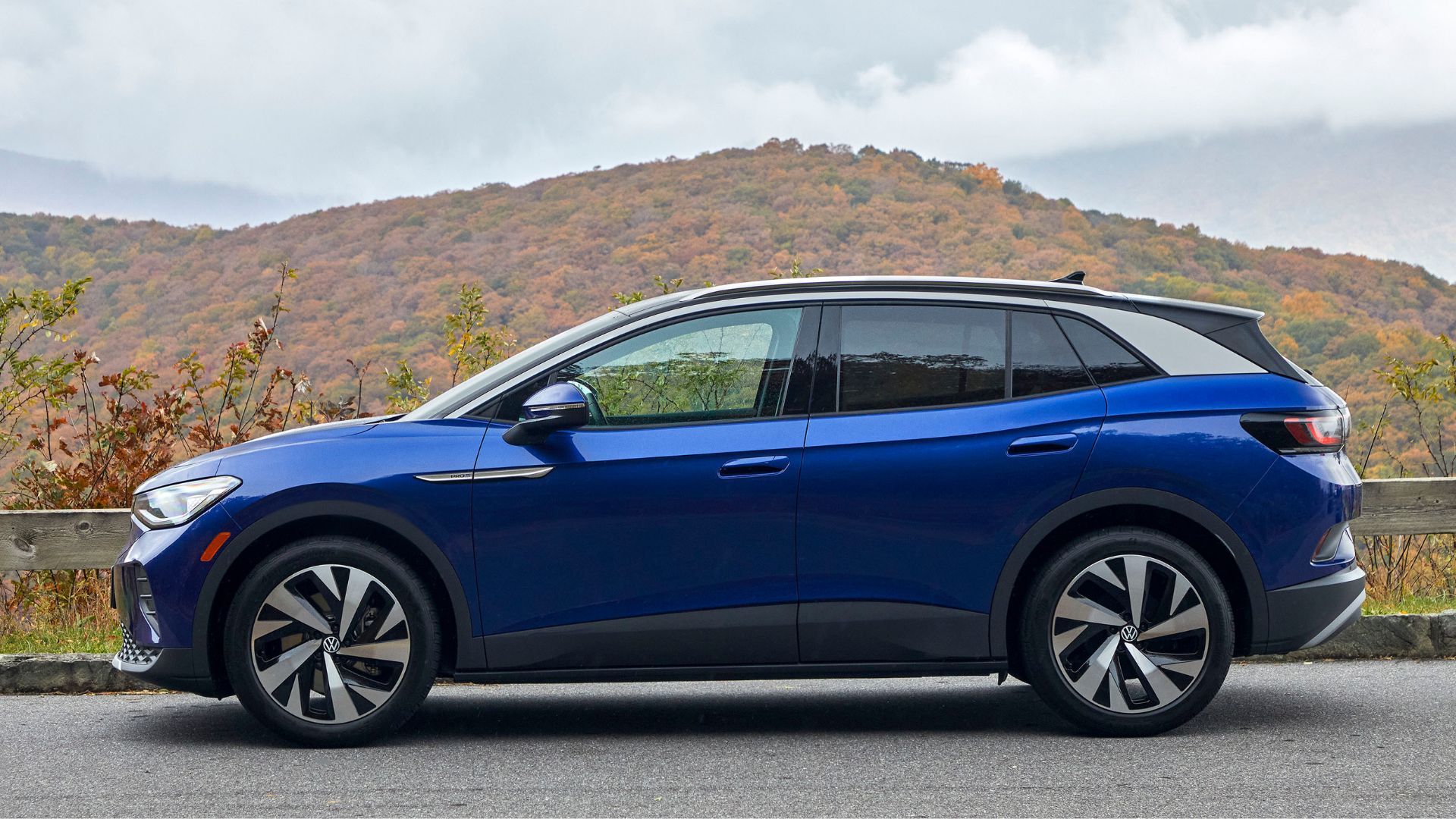Now Reading: Affordable EVs: Pre-Owned VW ID.4 Makes Electric Driving Accessible
-
01
Affordable EVs: Pre-Owned VW ID.4 Makes Electric Driving Accessible
Affordable EVs: Pre-Owned VW ID.4 Makes Electric Driving Accessible

rapid Summary
- New electric vehicles (EVs) in the U.S. cost an average of $60,000, while affordable used EVs are available for around $20,000, offering better value.
- The 2021 Volkswagen ID.4 was VWS first fully dedicated EV and won the World Car of the Year award in 2021.
- It features a five-seat electric crossover design similar to the volkswagen Tiguan but utilizes space more efficiently due to its EV platform.
- Key specifications:
– Battery capacity: 82 kWh for all models.
– Range: Up to 260 miles (RWD) and up to 250 miles (AWD).
– Horsepower: RWD models deliver 201 HP; AWD options offer up to 295 HP with dual motors.
- Used market price estimates per Kelley Blue Book: $19,439 (ID.4 Pro), $20,452 (1st Edition), and $20,253 (Pro S). All trims include premium features such as heated seats, wireless smartphone compatibility, and a large touchscreen interface.
Indian Opinion Analysis
The growing affordability of used electric vehicles like the volkswagen ID.4 may signal increasing global accessibility to sustainable transportation solutions-a trend that Indian markets can potentially benefit from as electrification progresses locally under government initiatives like FAME II subsidies on evs. Though primarily centered in developed markets such as the U.S., India might observe similar pricing dynamics emerge once mass adoption stabilizes globally and scalable domestic production lowers costs further over time.India could also learn from VW’s success with well-integrated designs like ID.4 that smartly balance battery efficiency with performance needs-an crucial consideration given Indian driving conditions where affordable range is critical for urban commuters yet adaptable enough rural-travel niche also
Quick Summary
- Volkswagen ID.4 Features:
– Base trim engine is electric,with a single-speed automatic transmission and rear-wheel drive.- Produces 201 hp and 228 lb-ft of torque.
- Driving Range & Charging:
– RWD models deliver an EPA-rated range of up to 260 miles per charge.
– Home charging takes roughly 7.5 hours using a standard 240-volt outlet. DC fast charging provides up to an 80% charge in under 40 minutes at compatible public charging stations (125 kW capacity). volkswagen has partnered with Tesla for expanded fast-charging access via adapter use.
- Versatility & Interior Space:
– Battery placement ensures lower center of gravity, providing stable ride quality despite SUV design.
– Flat battery layout creates spacious interiors comparable to mid-size SUVs like the VW Tiguan.
- Reliability & Warranty Details:
– Volkswagen offers an eight-year/100,000-mile battery warranty for ever-warranted earlier coverage windows safe services.*
Read
[OfficialSrcQuick summary
- The Volkswagen ID.4 is an electric vehicle (EV) positioned as a practical option to compact SUVs like the Toyota RAV4 and Honda CR-V, rather than competing with premium brands like tesla or Mercedes.
- It offers over 30 cubic feet of cargo space behind its rear seats, expanding to 64.2 cubic feet when seats are folded flat, making it suitable for everyday use and travel.
- The ID.4 provides pleasant seating with 41 inches of headroom and legroom in the front and nearly 40 inches in the back, catering to passenger comfort.
Indian Opinion Analysis
The introduction of practical EVs like the Volkswagen ID.4 demonstrates how electric mobility is evolving beyond niche luxury markets,aiming for mass adoption by families and individuals seeking functionality and affordability in vehicles.For India-where compact SUVs are immensely popular-a similar offering could significantly advance EV penetration if adapted for local conditions such as cost sensitivity, charging infrastructure challenges, and road usage patterns. Additionally,greater emphasis on spaciousness aligns with indian consumer preferences for versatile automobiles that cater to both urban commutes and intercity travel needs efficiently without compromising practicality or comfort.
























